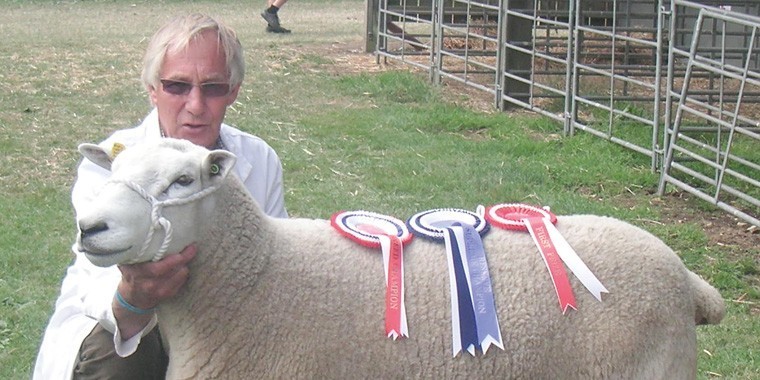There were some very good speakers, and the event provided the opportunity to visit facilities at the new University of Surrey veterinary school and their post mortem facilities in particular. The vet school will be working with DEFRA to carry out disease surveillance work and will offer subsidised post mortem investigations.
Investigations of sheep abortions, directed through your vet, can, if accepted for part of the surveillance work, be carried out for about £50 plus VAT. A cheap investigation into unexpected or undiagnosed abortions could potentially save a lot of money and trouble. Sheep (breeders are responsible for transporting carcasses to Guildford) post mortems (PM) can be carried out for a little under £70 with gross PM results returned within a couple of days and histological and other investigation results within a week. This really does have the potential to be a very useful facility for all sheep producers in the South East.
One interesting figure arising from the annual meeting was that the South East region of the NSA has about 700 members, remarkable for a region that does not have a huge sheep population (Scotland only has 850 members). That said, the NSA could always do with more members: as an organisation it works exceptionally hard (and successfully) lobbying government and other bodies on behalf of all sheep producers, activity that is going to be of increasing importance going into the future, particularly if, as a country, we do exit the European Union, which is always a possibility.
Sheep farmers do not feature very highly on the list of priorities for politicians. Our current government does not even have a plan B for agriculture should we leave the EU. In order to be heard we need strong organisations lobbying on our behalf and any producer organistation is only as strong as it’s membership, so why not subscribe to the NSA: as sheep producers it is your organisation and your voice.
DEFRA has very recently produced a report on the potential risk to the UK from Bluetongue (BT) crossing the channel from France. The main conclusion is that there is a five to 10% risk of BT entering the UK in the spring, rising to a 60 to 80% chance by late summer. Unfortunately DEFRA does not seem to consider the severity of symptoms observed in France or the potential economic impact on UK sheep producers important enough to subsidise the cost of a vaccination programme, even though a high level of vaccination uptake in the South East and along the south coast could protect the rest of the UK.
Sadly there are currently no vaccine stocks available. Vaccine manufacturers committed a lot of time and resources to developing and producing a vaccine in 2007/08, only to see producers fail to commit to vaccination once the initial outbreak subsided. Understandably they are now reluctant to commit to the production of BT vaccine without some assured market. With DEFRA not coming on board we now depend on producer organisations to lobby manufacturers on our behalf and it is also up to us as concerned producers to demonstrate some sort of commitment to vaccination, e.g. registering your interest in vaccination with your vet so that the message can be relayed to manufacturers.
If BT does cross the channel supplies of vaccine will need to be readily available to control its spread: if manufacturers don’t see any indication of a market for their BT vaccine – a product that can have a two to three month lead in time – they will not start production. Interestingly, if or when BT does reach the channel coast in France, UK producers could end up inside French 62 mile restriction zones. An outbreak near to Calais could, for example, see most of Kent inside a French restriction zone even before the disease enters the country. Producers really do need to be in a position to make informed decisions and take action on BT vaccination: don’t just leave it to your neighbour.
Back at a farm level, however, my experience with an over lively Suffolk ram jumping fences (and jumping back to his own paddock) over the summer have led me to question even more current recommendations on feeding pregnant ewes. He stopped seven ewes all of which have now lambed (13 lambs). The ewes’ nutrition ranged from having grass and molasses blocks only up to about four weeks with a little supplementary feed (Wheatbeet, other feeds are available).
Lamb birth weights have averaged six kilograms for ram lambs and 5.6kg for ewe lambs, all out of Lleyn ewes at body condition scoring three to 3.5, with no significant difference in the weight of lambs out of supplemented and non supplemented ewes. All lambs are growing well, doing about 300 grams a day in the first seven to 10 days of life. Ewe nutrition is one of the keys to success and I know that Lleyn sheep are efficient converters of forage. But, as long as feeding decisions are informed, do we really need to feed our sheep as much as we are advised?




